#Low Code No Code AI
Explore tagged Tumblr posts
Text
#AI in Software Development#Vibe Coding#AI Code Generation#Natural Language Programming#Future of Coding#Low Code No Code AI#Prompt Engineering#AI-Powered IDEs
0 notes
Text
Carl Grimes and Ron Anderson from twd bc I love the show sm
And also progress pics cuz loveez😽😽
spoilers if you haven't finished the show probably
No filter

Instagram Filter and easy street 🤯
Erm this is NOT ship art btw idk y I seen sm ship art of them when looking for reference
Wips of ron



Layout wips



The pew pew💥🔫

Carl 🤠💞
I did a digital of Carl too for a test animation since I've been working on a few animations


I hate that Carl died I cried so much it was so sad I kept whipping my tears to watch I'm gonna miss him so much I already do in what I've watched since his death I had to take a break after bc it was so sad I Lowkey liked Ron when he was first introduced but quickly disliked him but it was sad to see what happened to him nun the less he was a kid so I gotta give him some benefit of the doubt but why you gonna shoot Carl like that bruh anyway hope someone likes this idk if I'm happy with it but it's pretty good it's mixed media mostly watercolor and color pencils but I did use some markers and pens as well not sure what else lols took me a few days but I think I'm finally done since I signed it and dated it (on the side it's pretty small) I thought this was a good concept anyways so here ya go gotta feed the community
#so me coded#idk how to tag this#the walking dead fanart#carl grimes#twd carl#twd#the walking dead#the walking dead fan art#twd fanart#carl grimes fanart#ron anderson#ron Anderson twd#ron Anderson fanart#sketchbook#art#drawing#all my own work#i hate ai#it's low-key mid#Spotify
2 notes
·
View notes
Text
"That’s when it hit me: A.I. is just as much a challenge to numeracy — our knowledge and ability to use mathematics and reason quantitatively — as it is to literacy.
In February, the A.I. engineer Andrej Karpathy reported on X that he was engaged in a new form of software development he called “vibecoding.” Using nothing more than a series of spoken prompts to a chatbot, he was conducting ad hoc experiments on data and said he would “barely even touch the keyboard.” He said this allowed him to “forget that the code even exists,” leaving the grunt work to the A.I. and simply directing from above. Mr. Karpathy’s post went viral, and many others acknowledged they were doing the same.
By some accounts, though, vibecoding isn’t going well. The code that Mr. Karpathy’s prompts create has been reported to be inefficient and riddled with irreversible errors. Worse, programmers using the method say they’ve found themselves not merely forgetting that code exists but forgetting how to code. As is the case with reading and writing a language, code is one of those things where if you don’t use it, you lose it. Early studies indicate that humans who use A.I. could become less creative over time."
#AI tag#i was just having a conversation with M about something semi-related to this the other day#i was like if they use AI to eliminate entry-level jobs#then how will they train a new generation of people to advance to non-entry-level jobs?#you can't skip the basics!#if you can't code because you never learned and/or never had ample opportunities to practice in a low-stakes role#how will you become an expert who can evaluate the code and fix mistakes
4 notes
·
View notes
Text
yk its just. so goddamn fun watching the rise of llms as an artist, writer *and* programmer. oh haha yeah the computers are gonna take over literally any potentially tolerable career i could have? cool. great. i cant wait
#like i dont think that llms will ever be able to fully take over those roles#not well anyway#but i dont think thatll stop corporations from trying to force them in there eventually!#who cares about low quality work when you dont have to pay creators right#i mean. i guess i could get a job as one of the guys who manually fix gpts shit ass generated code until businesses give up on ai#but christ that sounds depressing#anyway yeah. fuck computers#why do i have to be in three of the roles techbros are targeting#ben affleck smoking dot png#me.txt
3 notes
·
View notes
Text
Front-end Software Engineer (Web3)
Job title: Front-end Software Engineer (Web3) Company: stakefish Job description: As our front-end developer, you will be responsible for building the ‘client-side’ of our web applications… front end developer, with a p***ion for blockchain You have extensive experience with front-end design and client-side web… Expected salary: Location: London Job date: Fri, 25 Apr 2025 22:09:23 GMT Apply for…
#Aerospace#Azure#business-intelligence#CRM#CTO#Cybersecurity#data-privacy#DevOps#Ecommerce#ethical AI#ethical-hacking#game-dev#healthtech#iOS#iot#Java#low-code#Networking#NFT#NLP#no-code#power-platform#proptech#site-reliability#SoC#software-development#technical-writing#uk-jobs#Web3 Developer
1 note
·
View note
Text
How to Export Clean Code & Avoid Vendor Lock-In with FAB Builder
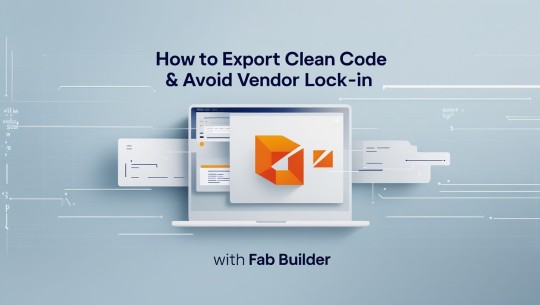
Have you ever built an application on a platform only to realize later that you’re stuck with it? This is a common problem in the modern development ecosystem, especially with the growing popularity of no code platforms. While these platforms promise speed, flexibility, and scalability, many developers and businesses find themselves trapped in what’s called vendor lock-in. But does it have to be this way?
What if there was a way to combine the speed of a no code platform with the freedom of custom code? What if you could develop applications quickly and still walk away with clean, exportable code you truly own? This is where FAB Builder enters the conversation, changing the way we think about code generation and app development.
Why is Clean Code Export Important?
Let’s start with the basics. What does it mean to export clean code?
In the world of application development platforms, clean code refers to code that is easy to read, maintain, modify, and reuse. Clean code is well-structured, follows standard conventions, and avoids unnecessary complexity. Exportable clean code means that what you create inside a platform can be taken out and run, modified, or extended independently.
This feature is not just a convenience—it’s a necessity.
When your business depends on a web or mobile app, being tied to a specific platform to maintain or scale it can become a serious roadblock. You might face challenges like:
Paying recurring licensing fees
Waiting for vendor-specific updates
Inability to integrate with other tools
Trouble onboarding developers who aren’t familiar with the proprietary environment
Risk of losing your application if the platform goes offline or changes its policy
Would you buy a car if you could only drive it on one specific road? Probably not. That’s what vendor lock-in feels like in the tech world.
What Is Vendor Lock-In in No Code Platforms?
Vendor lock-in happens when the platform you use to build your application restricts your ability to move your app or data elsewhere. Many no code platforms offer great tools, intuitive design, and fast deployment, but the trade-off is that the app lives entirely within their ecosystem.
You may have limited access to the underlying code, meaning you can’t export or run your app without the platform. Even if code export is offered, it’s often poorly structured, bloated, or filled with proprietary dependencies that make it nearly impossible to edit or manage outside the original environment.
Is this really the freedom that no code promised?
Can You Really Have the Best of Both Worlds?
Here comes the big question: Can you combine the ease of no code platforms with full control over your application? The answer lies in the evolution of modern code generation technology.
Traditional code generators have been around for a while, but many still fall into the same trap—producing unreadable or unscalable code. But with advancements in AI code generators and smart code builders, the approach is shifting.
FAB Builder, for instance, has been designed to rethink how we build, export, and scale applications.
How FAB Builder Approaches Code Generation Differently
When examining FAB Builder, a few things become clear. The platform positions itself as an intuitive application development platform that puts control back into the developer’s hands.
So how does FAB Builder help you avoid vendor lock-in?
1. Exportable, Developer-Ready Code
One of the standout features is its ability to generate exportable code that adheres to standard frameworks. Instead of trapping you in a closed ecosystem, FAB Builder acts more like an intelligent code generator—allowing you to develop visually and then export real, clean code.
You can take this code, modify it in your preferred IDE, integrate it with third-party systems, or even host it independently. This breaks the cycle of dependency and allows full autonomy over the product.
Wouldn't you rather build with confidence, knowing your code is yours to keep?
2. Clean Code Structure for Scalability
The code generated by FAB Builder isn’t just exportable—it’s also clean and modular. That means any developer with experience in standard technologies can pick it up, understand it, and work with it. Clean, readable code is crucial when scaling your application, onboarding new team members, or debugging.
If you’ve ever tried to untangle poorly generated code, you know how much time and energy that consumes. So why not use a code builder that keeps code hygiene in mind from the beginning?
3. AI-Powered Code Generation with Developer Logic
Another key differentiator is FAB Builder’s use of AI—not just for smart suggestions or faster development, but for real-time AI code generation that respects logic, flow, and modern best practices.
Instead of spitting out blocks of generic code, the system understands the user’s intent, making it possible to generate clean, optimized code that mirrors how a developer would write it.
Isn’t it time that AI-assisted coding stopped being a gimmick and started being practical?
Why Should Businesses Care About Vendor Lock-In?
From a business perspective, being tied to a single platform can have long-term consequences. Initially, it may seem cost-effective or timesaving, but as your application evolves, the limitations begin to surface.
You might need to:
Integrate with legacy systems
Implement custom features not supported by the platform
Shift to on-premises hosting due to compliance requirements
Transition to a new tech stack based on market demands
If you’re locked in, each of these moves becomes difficult, expensive, or impossible.
Choosing a platform that gives you control from day one can help future-proof your product.
Is No Code the Right Approach if You Want Full Control?
This is where the conversation gets interesting. Traditional views often pit no code against full-stack development—as if one is fast but limited, while the other is powerful but slow. But with platforms like FAB Builder, this binary thinking is being challenged.
No code doesn’t have to mean no control.
By providing a hybrid approach—visual development backed by exportable, structured code—FAB Builder offers a middle path. It empowers non-developers to prototype and build, while also enabling developers to refine, scale, and own the final product.
Can a no code platform be both easy and professional? The answer seems to be yes—if it’s built with flexibility and ownership in mind.
How to Avoid Vendor Lock-In: Practical Steps
Avoiding vendor lock-in requires a conscious approach. Here are key considerations when evaluating a platform:
Does the Platform Offer Code Export?
This should be the first box to check. Look for platforms that don’t just offer code export, but ensure that the code is well-structured and free from proprietary dependencies.
What Technology Stack Does It Use?
Make sure the generated code is based on widely accepted frameworks and languages. This will make it easier to maintain and scale with standard developer resources.
Can Developers Take Over Easily?
Even if the app was built using no code tools, the code should be intuitive enough for professional developers to work with. You shouldn’t need to “rebuild” everything just to add new features.
Is the Platform Transparent?
Transparency about how the code is structured, what technologies are used, and how the backend operates is critical. Avoid platforms that operate like black boxes.
Does It Support Long-Term Flexibility?
Think about your product’s future. Will you need to integrate with other services? Host on different servers? Add new user roles or workflows? Choose a platform that supports this kind of evolution.
Is FAB Builder the Future of Code Ownership?
While there are many tools in the no code space, few manage to offer the same degree of balance between visual simplicity and backend control as FAB Builder. Its emphasis on clean code generation, developer-ready exports, and AI-assisted logic makes it a powerful tool for those who want to build quickly but scale intelligently.
More than just a development platform, it acts as a code builder that doesn’t compromise code ownership—a crucial need in today’s fast-paced, ever-changing tech environment.
In a world where technology changes overnight, wouldn’t you rather build a foundation you control?
Final Thoughts: What Kind of Builder Do You Want to Be?
Choosing a no code platform isn’t just about faster development—it’s about long-term control. With most platforms, speed often comes at the cost of ownership. But tools like FAB Builder challenge that norm by offering both visual simplicity and full access to clean, exportable code.
In a rapidly changing tech world, being able to own, edit, and scale your application without limitations is a major advantage. Whether you're building a startup MVP or a scalable enterprise solution, having the freedom to grow on your own terms is essential.
So ask yourself—do you want to be a builder who’s locked into a system, or one who fully owns and shapes their product from start to finish? With the right platform, you don’t have to choose between ease and control—you can have both.
FAQs
Q1. What is vendor lock-in in no code platforms? Vendor lock-in refers to the limitations users face when they cannot move their app, data, or code outside a platform, often due to lack of exportable or editable code.
Q2. Can no code platforms like FAB Builder export clean code? Yes, FAB Builder allows developers to export clean, modular code that can be independently hosted, modified, and extended without relying on the platform.
Q3. Why is clean code important for application development? Clean code ensures scalability, easier debugging, better collaboration among developers, and long-term sustainability of your application.
Q4. How does FAB Builder use AI in code generation? FAB Builder uses AI to understand the user's intent and generate developer-grade, optimized code structures, improving both speed and accuracy.
Q5. What are the benefits of using a hybrid no code platform? A hybrid no code platform like FAB Builder allows fast visual development along with full code export, offering the best of both worlds—speed and control.
#app development#low code platforms#code generation#ai code generation#app developers#fab builder#application developer#mobile app development#ai powered solutions
0 notes
Text
Doing it all = burnout. 😵💫 Learn how to delegate smarter using freelancers + AI — and reclaim your focus! 🔹 #solopreneur #delegation #productivitytips #freelancers #aitools #businesstips
#1#AI delegation best practices#AI for small business owners#AI prompts for business#AI tools for entrepreneurs#AI vs freelancers#best AI apps for creators#best AI tools for solopreneurs#best delegation frameworks#best delegation tools#best delegation tools for creators#best freelancer websites#best freelancers for solopreneurs#best low-cost AI tools#best no-code tools for solopreneurs#best platforms for hiring freelancers#best platforms for solopreneurs#best practices for solopreneur workflows#best tools for solopreneurs#business automation tools#content strategy for solopreneurs#freelance delegation tips#freelance help for small businesses#freelancer vs automation#how solopreneurs can save time#how to automate admin tasks#how to automate content creation#how to automate solo business#how to balance creativity and operations#how to batch your content
0 notes
Text
The Rise of AI-Powered Low-Code Platforms
AI is revolutionizing software creation and making low-code/no-code platforms into smart development tools.
Low-code and no-code services are changing quickly; now they have AI to help make software faster, smarter, and easier for more people. By 2025 these platforms do more than just drag-and-drop, they use generative AI, which can turn simple language prompts into working apps.
1) AI-Driven Code and UI Generation
With AI built into low-code/no-code development tools users can explain their app ideas in regular sentences. The system then creates designs business logic & even necessary backend processes– effectively transforming concepts into tangible products extremely fast!
2) Predictive Automation
AI boosts these platforms by giving smart suggestions, automatically creating fields, and organizing data flows based on what you want, speeding up development even for big enterprise tasks.
3) Quality and Testing Built-In
Today's platforms have AI tools for finding bugs and checking quality. This makes sure your applications launch quickly and then run well with few errors.
4) Conversational Interfaces
Some platforms let you use voice or chat to interact. You can literally "talk to" the app builder getting instant functional prototypes, pushing the limits of low-code/no-code services further still.
Final Thought:
AI plus low code no code application development is totally changing what's possible. The new generation of tools doesn't just make coding simpler, it automates the whole thing allowing anyone to build powerful applications quickly so they work at scale.
#artificial intelligence#mooglelabs#technology#ai ml development#no code#low code app development#low code
0 notes
Text
The Bold Shift: Why IT Leaders Must Champion Hyper-automation Now.
Sanjay Kumar Mohindroo Sanjay Kumar Mohindroo. skm.stayingalive.in Hyper-automation is not a tech upgrade—it’s a leadership challenge. Discover why bold IT leaders are driving the shift. Hyper-automation is no longer just a buzzword. It’s the lifeline for large enterprises that want to survive the next ten years. With rising operational costs, inconsistent manual processes, and growing…
#AI-driven automation#automation strategy#digital operations#digital transformation#enterprise automation#future of IT#hyper-automation#IT Leadership#low-code automation#modern IT stack#News#process automation at scale#RPA#Sanjay Kumar Mohindroo
0 notes
Text
🤖 Discover how Xrm.Copilot is revolutionizing Dynamics 365 CE with AI! Learn about its key capabilities, integration with the Xrm API, and how developers can build smarter model-driven apps. Boost CRM productivity with conversational AI. #Dynamics365 #Copilot #PowerPlatform #XrmAPI #CRM #AI
#AI in Dynamics#Azure OpenAI.#CRM AI#CRM Automation#dataverse#Dynamics 365 CE#Low-Code AI#Microsoft Copilot#Model-Driven Apps#Power Platform#Xrm API#Xrm.Copilot
0 notes
Text
Product Engineering in Software Engineering: Latest Trends
Explore how Product Engineering in Software Engineering drives innovation with AI, cloud, low-code, and modern development trends.
Building digital products today requires more than just good code. As a result, companies are shifting to smarter product development methods. As businesses strive to meet rising customer expectations, they often seek help from a software product engineering services company.
These companies combine technology, design, and strategy to bring innovation faster and more reliably.
Therefore, let’s explore how product engineering in software engineering is evolving and what trends are shaping its future.
Why Product Engineering in Software Engineering Drives Modern Products
The idea behind product engineering in software engineering is to build digital products that solve real problems quickly and efficiently. Rather than creating products in silos, teams now work together using shared goals, fast feedback, and constant iteration.
Continuous Discovery
First of all, product teams no longer wait months to understand customer needs. Instead, they perform weekly research sprints to validate every new idea. These discoveries reduce rework and help create user-focused solutions from day one. Furthermore, continuous discovery aligns the product vision with real-time market shifts.
Secure by Design
In the past, security was a final step in the product life cycle. Now, developers integrate security scans into their daily coding process. This proactive approach prevents threats and saves time on future fixes. Additionally, building security from the start improves trust and reduces compliance risks………….
#Product Engineering in Software Engineering#Software Product Engineering Services#AI in Product Development#Low-Code Development#Cloud Product Engineering#Edge Computing Trends#Composable Architecture#Responsible AI#Hyper-Personalization#Sustainable DevOps#Digital Product Innovation#Future Skills for Product Teams#Cloud-Native Security#Continuous Discovery#Irom Technologies
0 notes
Text
Unlocking The Power Of Simplicity With Low Code Rad Platforms
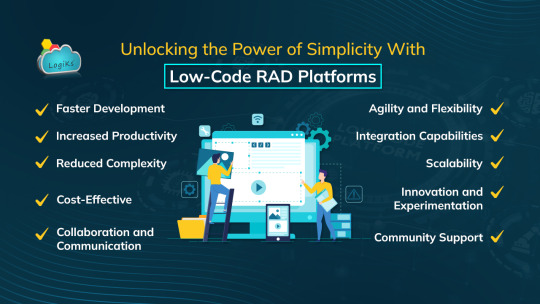
In a dynamic era driven by the constant evolution of technology, the demand for rapid and efficient application development has never been more pronounced. Low-Code Rapid Application Development Platforms, a transformative method that empowers developers to create applications with minimal hand-coding. This approach streamlines the application-building process, reducing reliance on traditional programming languages.
Low-Code RAD (Rapid Application Development) platforms offer pre-built components, accelerating development cycles and enabling quick iterations. In this landscape of innovation, Low-Code Development emerges as a game-changer, aligning with agile principles and providing a solution for organizations seeking speed, flexibility, and cost-effectiveness in the ever-evolving digital landscape. This blog delves into the benefits, scenarios for adoption, and the potential future impact of Low-Code RAD Framework, shedding light on its pivotal role in shaping the future of application development.
Click here to read more about the Low code RAD Framework!
1 note
·
View note
Text
Experts Reveal: The 10 IT Trends That Will Redefine Technology in 2025!

As we approach 2025, the pace of technological innovation is accelerating faster than ever before. From intelligent agents to immersive digital environments, the next wave of IT trends is set to redefine how we work, communicate, and make decisions. Businesses that understand and leverage these changes early on will be in the strongest position to lead in the digital economy.
Here’s a look at the top 10 IT trends that will define the future of technology in 2025:
1. Agentic AI Takes the Lead

AI is evolving into something far more autonomous — Agentic AI. These intelligent agents can perceive, reason, act, and learn independently. Unlike traditional AI, they don’t just follow rules — they achieve goals.
In 2025, expect to see AI agents managing workflows, enhancing customer service, and making real-time decisions with minimal human input. With 99% of developers already exploring agentic models, we’re entering the “Year of the Agent.”
2. Quantum Computing Becomes Practical

Once limited to labs and theory, quantum computing is moving into real-world applications. It’s revolutionizing fields like drug discovery, battery design, and financial modeling by solving problems classical computers struggle with.
While full-scale quantum computing is still evolving, 2025 will mark a turning point — with many businesses accessing quantum capabilities via the cloud.
3. Cybersecurity Powered by AI
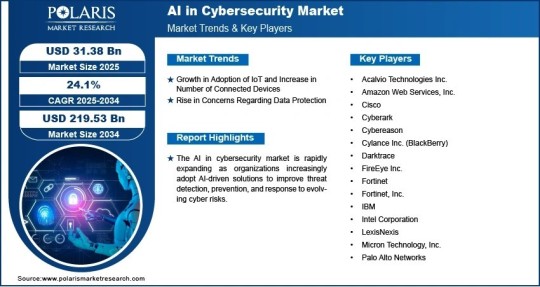
Cyber threats are more advanced than ever, and AI is stepping up to defend digital infrastructure. AI-driven cybersecurity tools detect threats in real time, predict future attacks, and automate incident responses. With over half of organizations already experiencing at least one cyberattack in the past year, the shift to AI-based defense is not optional — it’s essential.
4. Edge Computing Becomes the Backbone of IoT
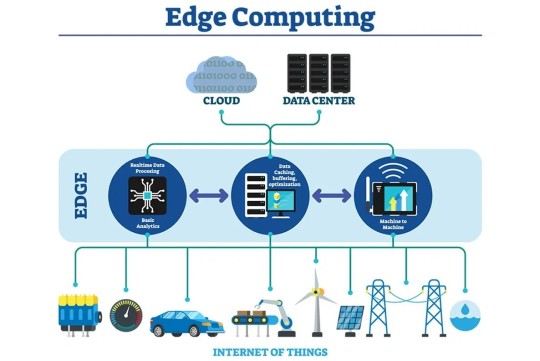
With nearly 75 billion connected devices expected globally, edge computing — where data is processed closer to the source — will become the standard. It reduces latency, cuts bandwidth costs, and enhances security. Edge computing is especially crucial for time-sensitive applications like autonomous vehicles, smart cities, and industrial automation.
5. Ambient Computing Redefines UX
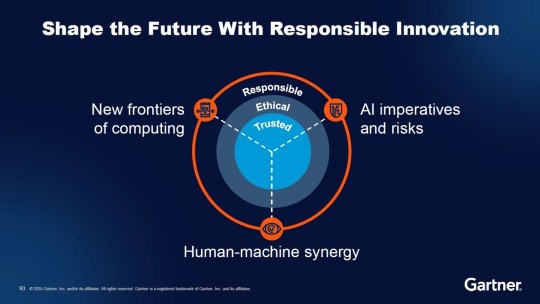
Technology is becoming invisible. Ambient computing — systems that respond without direct interaction — creates seamless user experiences. Smart environments adapt lighting, temperature, or digital displays automatically based on human behavior.
By 2026, 60% of developed world households will have some form of ambient tech. In 2025, it becomes a defining feature of intelligent living.
6. Low-Code/No-Code Platforms Empower Everyone

Software development is no longer exclusive to programmers. Low-code and no-code platforms enable business users to build apps visually, drastically reducing development time.
By 2025, 70% of new enterprise applications will be built using these tools. This shift not only accelerates innovation but also helps bridge the talent gap in IT.
Want the full list of all 10 top IT trends that will redefine the future of technology? Read out the complete article here: https://digitalconfex.com/top-10-it-trends-that-will-define-the-future-of-technology-in-2025
Final Thoughts
The IT trends of 2025 go far beyond surface-level upgrades. They represent deep structural shifts in how technology is designed, deployed, and experienced. Businesses that invest in understanding these trends today will be best equipped to lead tomorrow.
If you’re a tech leader, innovator, or strategist looking to stay ahead of the curve, now is the time to align your roadmap with these trends. Start with small experiments, scale what works, and stay flexible as these technologies evolve.
#top 10#tech trends#agentic ai#artificial intelligence#cybersecurity#quantumcomputing#no code#low code#ambient#edge computing#green technology#blockchain#wearabletrends
0 notes
Text
Unlocking Growth with Microsoft Dynamics 365 ERP Solutions
In a fast-paced digital world, businesses need more than just operational efficiency—they need intelligence, agility, and scalability. This is where Microsoft Dynamics 365 ERP solutions come into play. As companies strive to optimize operations, manage finances, and support decision-making, Dynamics 365 ERP emerges as a comprehensive, cloud-powered platform built for modern enterprise demands.
In this blog, we explore how organizations can unlock long-term growth by leveraging Dynamics 365 ERP, discuss implementation strategies, and highlight how a trusted partner like Acumant ensures successful ERP transformation.
What is Microsoft Dynamics 365 ERP?
Microsoft Dynamics 365 ERP is a suite of enterprise resource planning applications designed to help businesses automate core processes, streamline operations, and gain deep insights through real-time data. Unlike legacy systems, Dynamics 365 ERP is modular, cloud-native, and deeply integrated with the broader Microsoft ecosystem—including Power Platform, Azure, and Microsoft 365.
Core Modules Include:
Finance: Budgeting, forecasting, financial reporting
Supply Chain Management: Inventory, procurement, manufacturing
Project Operations: Resource planning, time tracking, billing
Commerce: Retail, e-commerce, POS systems
HR: Payroll, employee self-service, performance tracking
Why Businesses Choose Microsoft Dynamics ERP
1. End-to-End Integration
From CRM to financial reporting, everything integrates seamlessly across Microsoft applications.
2. Cloud-First Architecture
Access from anywhere with scalable cloud infrastructure and data security.
3. Real-Time Insights
Built-in analytics and dashboards powered by Power BI deliver actionable insights on demand.
4. Modular Flexibility
Deploy only what your business needs and expand as required—reducing cost and complexity.
5. AI and Automation
Intelligent automation through AI and machine learning supports predictive operations.
Key Benefits of Dynamics 365 ERP Solutions
Streamlined Operations: Automate repetitive tasks and reduce manual errors
Improved Collaboration: Unified platform boosts cross-team communication
Enhanced Decision-Making: Real-time data visualization with Power BI
Reduced IT Overhead: Cloud deployment removes the burden of infrastructure management
Scalable Infrastructure: Ideal for growing SMBs and large enterprises alike
Acumant’s Role in ERP Implementation
Implementing an ERP system is a strategic investment, and success depends heavily on the implementation partner. Acumant specializes in:
✔ Tailored ERP Roadmaps
Customized ERP design based on industry, scale, and specific business challenges.
✔ Seamless Data Migration
Secure, accurate transfer of legacy data to the Dynamics platform.
✔ Change Management Support
Training, documentation, and user adoption strategies for a smooth transition.
✔ Post-Implementation Optimization
Continuous monitoring and system refinement to align with business evolution.
Industry Use Case: Retail Expansion with Dynamics 365 ERP
Scenario: A mid-sized retailer expanding into e-commerce needs a unified platform to manage inventory, sales, and customer data.
Solution: Dynamics 365 ERP with Commerce and Supply Chain modules. Integrated with Low-Code Solutions to build a custom inventory app, and CRM tools for better customer engagement.
Outcome: 35% improvement in inventory turnover, 20% faster order fulfillment, and real-time performance tracking with Power BI.
How to Get Started with ERP Transformation
Assess Readiness: Evaluate current systems, data health, and resource capabilities
Define Goals: Align ERP features with business objectives (e.g., automation, compliance)
Partner with Experts: Choose a trusted implementation partner like Acumant
Plan & Execute: Create a phased rollout strategy, ensuring minimal disruption
Monitor & Optimize: Use analytics for continuous performance improvement
Future of ERP: What Lies Ahead
Hyper-Automation: Integration of RPA and AI for predictive and prescriptive analytics
Unified Data Ecosystems: Tighter integration with tools like Microsoft Fabric and Azure OpenAI
Citizen Development: Empowering business users to build apps via low-code tools like Power Apps
Sustainability Tracking: ESG and carbon tracking modules emerging in ERP systems
Conclusion
Microsoft Dynamics 365 ERP solutions are not just tools—they are growth enablers. With deep integration, real-time insights, and scalable deployment, they empower businesses to move faster and smarter. Whether you're streamlining finances, optimizing operations, or planning global expansion, Dynamics ERP provides a solid foundation.
Start your transformation today with a consultation from Acumant’s ERP experts.
Internal Links:
CRM Solutions
Low-Code App Development
QA & Operations
Data & AI
0 notes
Text
Senior Oracle EPM Cloud (Planning) Functional Consultant
Job title: Senior Oracle EPM Cloud (Planning) Functional Consultant Company: Version 1 Job description: & Ireland’s premier Oracle, Microsoft & AWS partner Market leader in Oracle ERP and Cloud Applications Consulting…, implementation, and support services 3300+ strong, €347m/£302m revenue business ERP Partner of the Year & 10 years as GPTW to work… Expected salary: Location: England Job date:…
#Android#audio-dsp#Azure#Backend#cleantech#cloud-native#DevOps#dotnet#Ecommerce#ERP Consultant#ethical AI#fintech#game-dev#gcp#generative AI#healthtech#HPC#it-support#Java#legaltech#low-code#mobile-development#product-management#project-management#proptech#SEO#software-development#system-administration#telecoms
0 notes
Text
What Are the Pros and Cons of No-Code Platform in 2025?
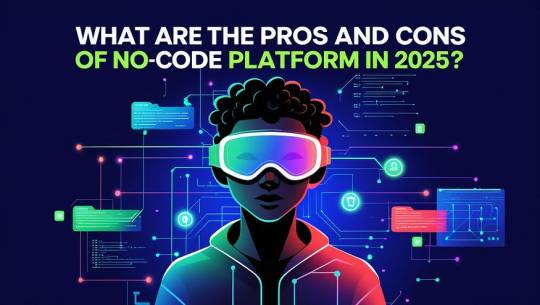
Is Traditional Coding Becoming Obsolete? The Rise of No-Code Platforms in 2025. Imagine building a fully functional app without writing a single line of code. Sounds impossible? Not anymore.
Welcome to 2025 — where the development of games is changing fast, and No Code Platforms are leading the charge. These innovative tools allow anyone, from entrepreneurs to enterprise teams, to design and launch powerful applications through simple drag-and-drop interfaces. No technical background? No problem. No-Code breaks down barriers and makes software creation accessible to all.
But while the benefits are big, so are the debates. Can these platforms handle complexity? Are they secure enough? And are they truly a replacement for traditional coding?
In this blog, we’ll break it all down. From the undeniable pros to the often-overlooked cons, we’ll help you decide whether embracing a No Code Platform in 2025 is a bold leap forward — or a risky shortcut for your business.
What Is a No-Code Platform?
A No-Code Platform is an application development platform that allows users to create software, apps, or digital solutions without writing a single line of code. Instead, these platforms use drag-and-drop interfaces, pre-configured templates, and visual workflows to help users build functionalities.
Whether it’s a website, a mobile app, or an internal tool, a No-Code solution makes it possible for non-developers to take part in digital transformation. This is particularly impactful for small businesses, startups, and even large enterprises looking to reduce costs and speed up innovation.
Why Is No-Code So Popular in 2025?
In 2025, the demand for digital tools has never been higher. Every business, regardless of industry, requires some form of digital presence or automation. However, hiring developers is expensive, time-consuming, and often inaccessible to smaller companies. This is where No Code Platforms step in.
With advancements in AI code generators, visual development tools, and code generation techniques, modern No-Code solutions offer far more flexibility and functionality than their predecessors. Many of these platforms now support integrations with APIs, cloud storage, data analytics, automation workflows, and even limited scripting customization.
This rapid evolution has made No-Code Platforms not only a preferred choice for prototyping but also for full-scale production apps.
What Are the Pros of Using a No-Code Platform in 2025?
Is No-Code Development Faster Than Traditional Coding?
Yes, one of the biggest advantages of a No-Code Platform is speed. You can launch a working prototype within days or even hours. Traditional software development may take weeks or months just to get through initial phases. With visual builder and prebuilt components, no-code tools help streamline the process.
Can You Save Money with a No-Code Platform?
Absolutely. Since you don’t need to hire a team of developers or engineers, you can significantly reduce your development costs. Startups and small businesses, in particular, benefit from code builders that let them create MVPs without heavy investment.
Do No-Code Platforms Empower Non-Technical Teams?
Yes, they do. Marketing teams, HR departments, and operations managers can now build internal dashboards or automate workflows without depending on IT. This democratization of development means more people can solve problems independently.
How Does No Code Encourage Experimentation and Innovation?
The low-risk nature of the no code encourages creativity. Since it’s fast and cost-effective, businesses are more willing to experiment with new ideas, test hypotheses, and innovate freely. It has become a sandbox for growth teams to explore without exhausting resources.
Are No-Code Platforms Scalable Today?
Many platforms in 2025 support scalable infrastructure through integrations, plugins, and backend customization. Some offer hybrid solutions with limited code generation for advanced use cases. While there are still limits (more on that below), scalability is no longer a major barrier in most scenarios.
What Are the Cons of Using No-Code Platforms in 2025?
Is Customization Still a Challenge in No-Code?
Yes. While platforms have evolved, deep custom logic or unique workflows can still pose limitations. If your app requires very specific functionality, you might hit a wall or require a developer to step in.
Do No-Code Tools Lock You In?
Platform dependency is a real concern. If you build your entire business on a specific application development platform, migrating away can be extremely difficult. You may not own the codebase or the infrastructure, making it tough to scale beyond what the platform allows.
How Secure Are No-Code Solutions?
Security is another issue. While many platforms offer enterprise-grade security, the ease of access also increases the chance of poor security practices by inexperienced users. Relying on third-party services means you need to trust their trust in their protocols.
Are There Performance Limitations with No Code?
Yes. Apps created using visual builders can sometimes be less efficient than those built from scratch. If your application handles massive data sets, complex computations, or requires real-time responses, traditional development might perform better.
Does No-Code Discourage Learning Real Programming?
There is concern that overreliance on No-Code might create a skills gap. While No-Code opens doors, it doesn’t replace the foundational understanding that real coding brings. For companies that require deep technical architecture, in-house developer teams are still critical.
Can No-Code Be the Future of Development or Just a Temporary Trend?
This is a widely debated question. No-Code is no longer a trend but a mature approach to software development. It isn’t here to replace developers but to work alongside them. In fact, many developers are now using AI code generators and code builders as part of their workflow, embracing No-Code as a productivity enhancer rather than a competitor.
However, it’s important to understand that No-Code is most effective when used strategically. It’s ideal for quick prototypes, MVPs, internal tools, and customer-facing apps with standard functionalities. But for high-performance, complex systems, traditional or hybrid development is still preferable.
FAB Builder: A Revolutionary No-Code Platform in 2025
Among the rising players in the No-Code Platform space, FAB Builder stands out in 2025 as one of the most intuitive and powerful tools available. FAB Builder offers a highly visual development experience that combines simplicity with powerful features.
Designed for creators, entrepreneurs, and enterprises alike, FAB Builder helps users build full-stack applications without needing traditional coding skills. Whether you’re creating a CRM, a business dashboard, or a customer app, the platform supports advanced features like database integration, third-party API connections, and workflow automation.
What makes FAB Builder especially noteworthy is its focus on flexibility and scalability. It acts as both a code builder and an AI code generator by offering dynamic components that adapt to user needs. With prebuilt templates, intelligent workflows, and responsive design support, it’s a comprehensive application development platform that rivals even some low-code and traditional development tools.
FAB Builder is particularly useful for:
Startups wanting to launch their MVP fast
Non-tech founders needing to build apps without engineers
Enterprises creating internal tools without burdening IT
Its documentation, community support, and ongoing updates make it a reliable and forward-thinking solution in 2025.
How Can Businesses Decide Whether to Use a No-Code Platform or Not?
This often depends on the stage, scale, and goals of the business. Here are some guiding questions:
Do you need a prototype or MVP quickly?
Are you building an internal tool or customer-facing app?
Do you have a limited budget or access to developers?
Are the app’s functions relatively standard (CRUD operations, forms, dashboards)?
Is scalability important in the near future?
If the answer is yes to most of the above, then a No-Code solution like FAB Builder may be ideal.
However, if your app needs real-time processing, heavy custom logic, integration with proprietary databases, or enterprise-grade custom architecture, you may need a more traditional approach — or a combination of both using a hybrid development model.
What Industries Are Thriving with No-Code in 2025?
Several industries are benefiting from No-Code adoption, including:
E-commerce: Storefronts, order tracking systems, customer support dashboards.
Healthcare: Patient portals, appointment booking apps, internal workflow systems.
Education: LMS systems, student dashboards, online quiz platforms.
Marketing: Campaign automation, landing page creation, analytics dashboards.
Real Estate: Listing platforms, client management tools, virtual property tours.
Thanks to robust code generation and application development platforms, these industries are witnessing faster innovation cycles and more agile business models.
Final Thoughts: Is No-Code a Smart Choice in 2025?
Yes, if used with clarity and intention. The No-Code Platform revolution is not about eliminating code but about making the development process more inclusive. It enables those without technical expertise to bring ideas to life, solve real problems, and contribute to digital transformation.
However, like any tool, it has limitations. Understanding both the strengths and weaknesses of non code technology is essential for making informed decisions. As platforms like FAB Builder continue to evolve, the line between what’s possible with code and without it will continue to blur.
Ultimately, the smartest companies in 2025 will be those who know when to use No-Code — and when not to.
FAQs:
1. Can I build a fully functional app using a No-Code Platform? Yes, modern no-code platforms like FAB Builder allow you to create fully functional applications with features like databases, integrations, and automation workflows without writing code.
2. Are No-Code Platforms secure for business use? Most reputable no-code tools follow industry-standard security protocols. However, users must still implement best practices to ensure data privacy and access control.
3. Is there a learning curve for using a No-Code Platform? While much easier than traditional coding, no-code tools still require time to learn the interface, logic flows, and platform-specific features. Most platforms provide tutorials and community support to help you get started.
4. Can a No Code Platform handle large-scale applications? Many no-code tools today can support scaling through third-party integrations and backend services, but highly complex or resource-intensive apps may still require traditional or hybrid development.
5. What makes FAB Builder different from other No-Code Platforms? FAB Builder stands out with its user-friendly interface, powerful features, support for advanced workflows, and AI-assisted code generation tools, making it a versatile solution for both beginners and professionals.
#app development#no code platform#ai programming#ai code generation#fab builder#application development#low code app development#code generation#mobile app development#no code
0 notes